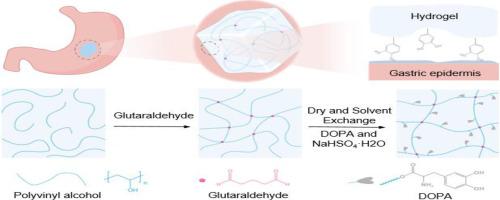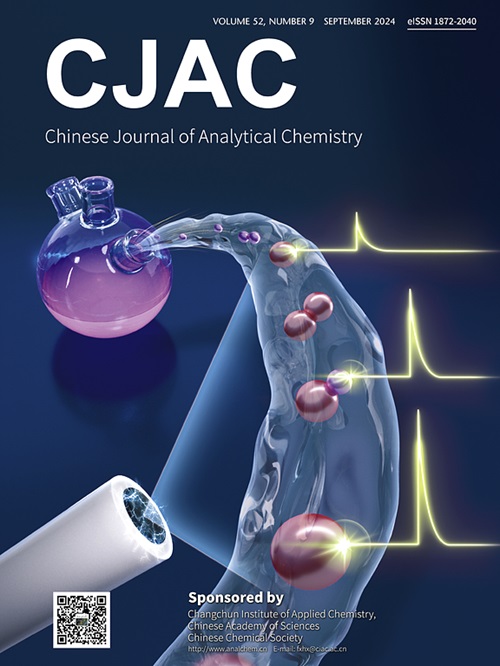儿茶酚修饰的湿粘水凝胶修复胃上皮
IF 1.3
4区 化学
Q4 CHEMISTRY, ANALYTICAL
引用次数: 0
摘要
胃穿孔可能是由于胃上皮损伤引起的,可导致胃内的食物或胃酸进入腹膜,引起腹膜炎、败血症等疾病。在严重的情况下,它可能导致感染性休克,并对生命构成威胁。开发和制备在潮湿环境(如胃表面)具有粘附性的材料是一个挑战。因此,我们成功地制备了一种具有湿粘性的水凝胶膜。该水凝胶膜由3,4-二羟基苯丙氨酸(DOPA)修饰的戊二醛交联聚乙烯醇(PVA)水凝胶组成。经DOPA修饰的PVA分子侧链通过在儿茶酚基团和组织底物表面之间形成氢键实现湿粘附。用于胃上皮损伤的无缝线修复。力学实验结果表明,其对胃组织的湿粘接剪切强度达到34.8 kPa,剥离强度达到24.5 kPa。体外细胞实验结果表明,该水凝胶具有良好的生物相容性。该方法制备的水凝胶对胃环境具有良好的适应性,在胃伤口修复中具有广阔的应用前景。本文章由计算机程序翻译,如有差异,请以英文原文为准。

Catechol-modified wet-adhesive hydrogel for the repair of the gastric epithelium
Gastric perforation, which may be caused by damage to the gastric epithelium, can lead to the entry of food or gastric acid in the stomach into the peritoneum, causing diseases such as peritonitis and sepsis. In severe cases, it can lead to septic shock and pose a threat to life. Developing and preparing a material that has adhesiveness in a wet environment such as the surface of the stomach is a challenge. Therefore, we have successfully prepared a hydrogel membrane with wet adhesiveness. This hydrogel membrane is composed of glutaraldehyde-crosslinked polyvinyl alcohol (PVA) hydrogel modified by 3,4-dihydroxyphenylalanine (DOPA). The side chains of PVA molecules modified with DOPA achieve wet adhesion through the formation of hydrogen bonds between the catechol groups and the surface of the tissue substrate. It is used for suture-free repair of damaged gastric epithelium. According to the results of mechanical experiments, its wet adhesion lap shear strength to gastric tissue reaches 34.8 kPa, and the peeling strength reaches 24.5 kPa. The results of in vitro cell experiments show that the hydrogel has good biocompatibility. The hydrogel prepared by this simple method demonstrates adaptability to the gastric environment, making it promising for applications in gastric wound repair.
求助全文
通过发布文献求助,成功后即可免费获取论文全文。
去求助
来源期刊
CiteScore
3.60
自引率
25.00%
发文量
17223
审稿时长
35 days
期刊介绍:
Chinese Journal of Analytical Chemistry(CJAC) is an academic journal of analytical chemistry established in 1972 and sponsored by the Chinese Chemical Society and Changchun Institute of Applied Chemistry, Chinese Academy of Sciences. Its objectives are to report the original scientific research achievements and review the recent development of analytical chemistry in all areas. The journal sets up 5 columns including Research Papers, Research Notes, Experimental Technique and Instrument, Review and Progress and Summary Accounts. The journal published monthly in Chinese language. A detailed abstract, keywords and the titles of figures and tables are provided in English, except column of Summary Accounts. Prof. Wang Erkang, an outstanding analytical chemist, academician of Chinese Academy of Sciences & Third World Academy of Sciences, holds the post of the Editor-in-chief.

 求助内容:
求助内容: 应助结果提醒方式:
应助结果提醒方式:


